Span 61 cm / 24 in
Weight 55 g / 1.94 oz
The original Duo Monoplane was a Jetex (rocket) powered model by designer Bill Dean published in the 1952 January issue of Aeromodeller magazine. I liked its appearance and its concept as a tandem wing model. So I altered only a little the distance between both wings, the planform of the main wing and I draw the bottom line of the fuselage continuously without the stepped cutout for the Jetex unit. Yes, and the model went through an enlargement process, it measures now nearly twice the old size.
Bill Dean’s original Duo Monoplane:
https://outerzone.co.uk/plan_details.asp?ID=3901
Look, what another model builder did to the Duo Monoplane. He dared to replace the Jetex unit by two small ducted fans and even radio controls his phantastic creation:
https://peterboroughmfc.org/membersmodels2012/13DuoMonoplane2/RCMW-2011-01-5pages.pdf
And here is a 3D rendition to the Duo Monoplane:
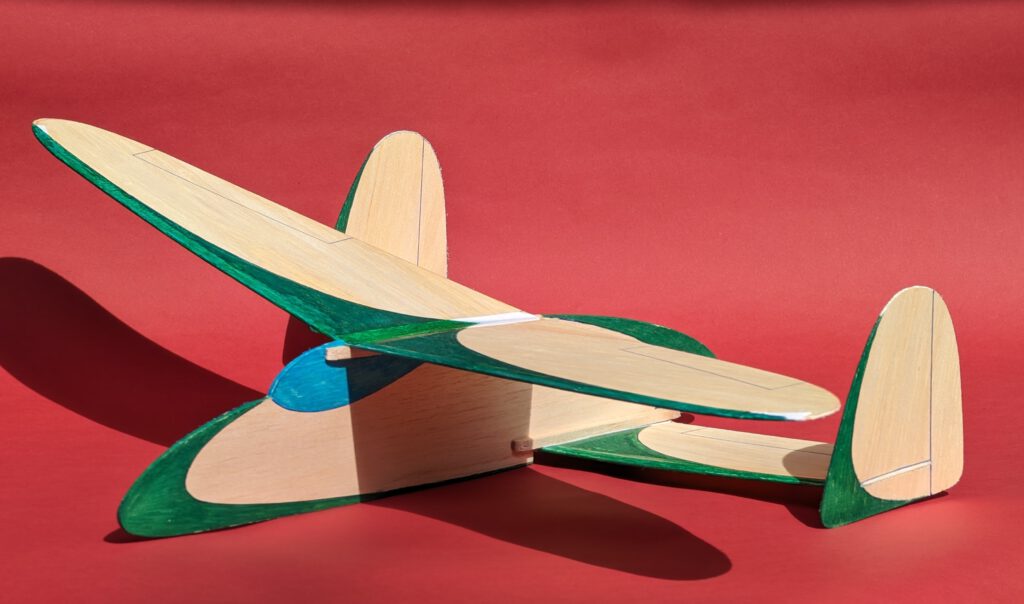
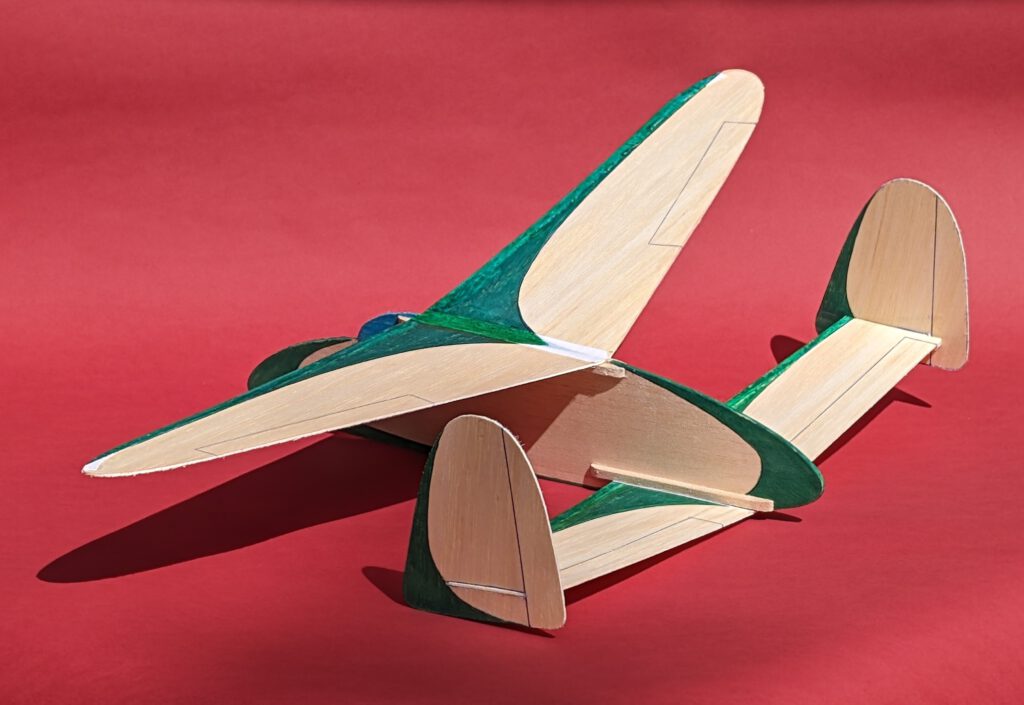
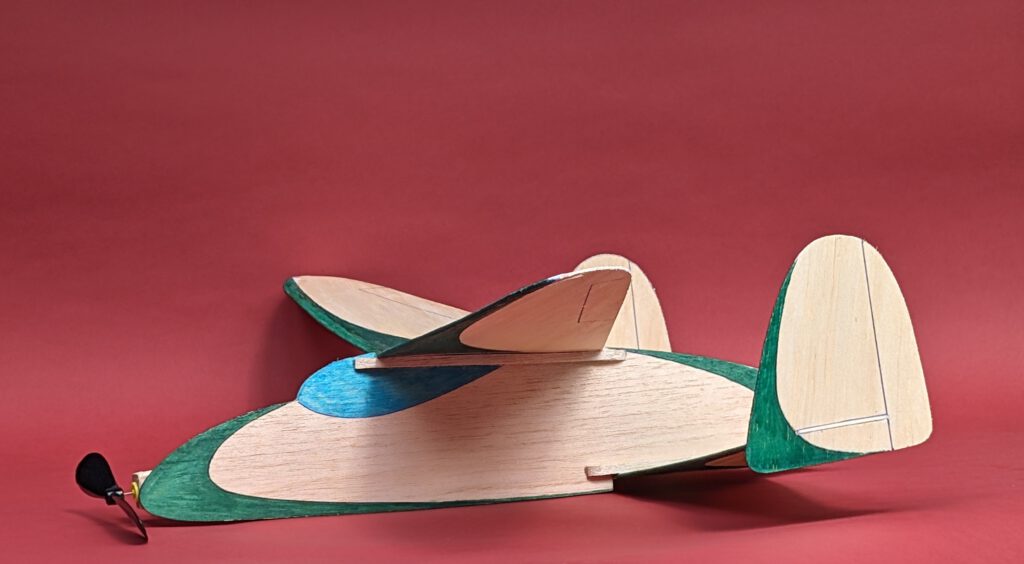
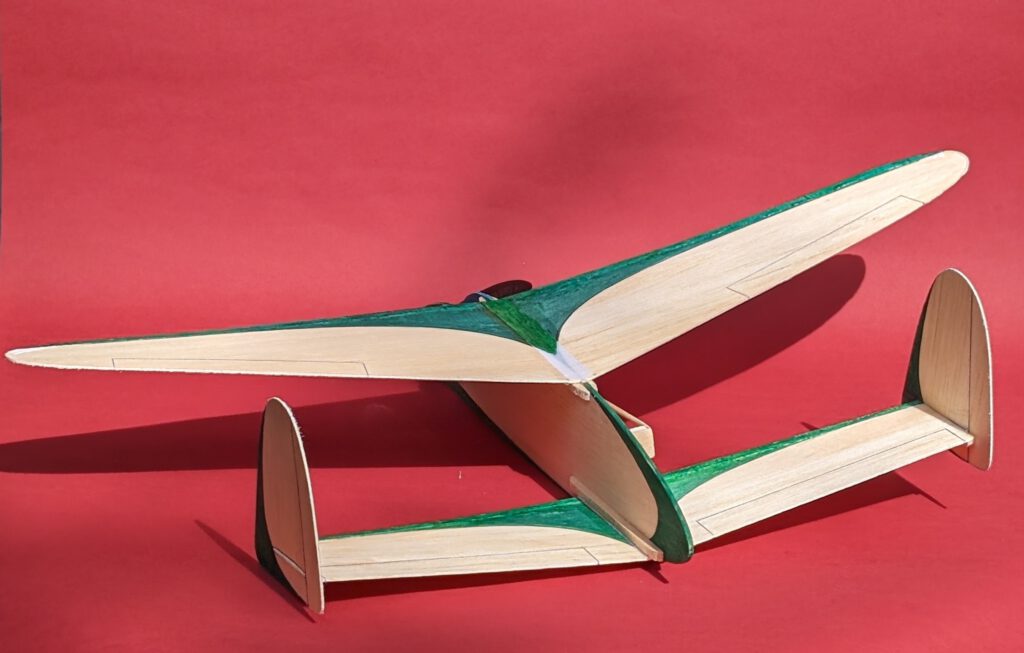
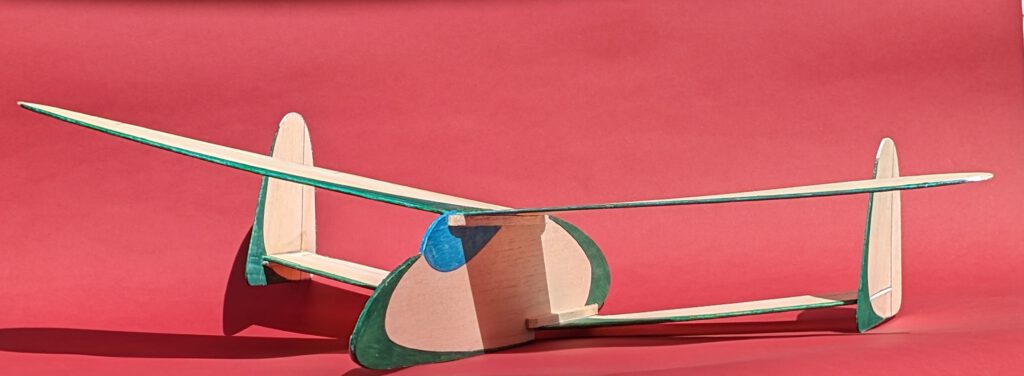
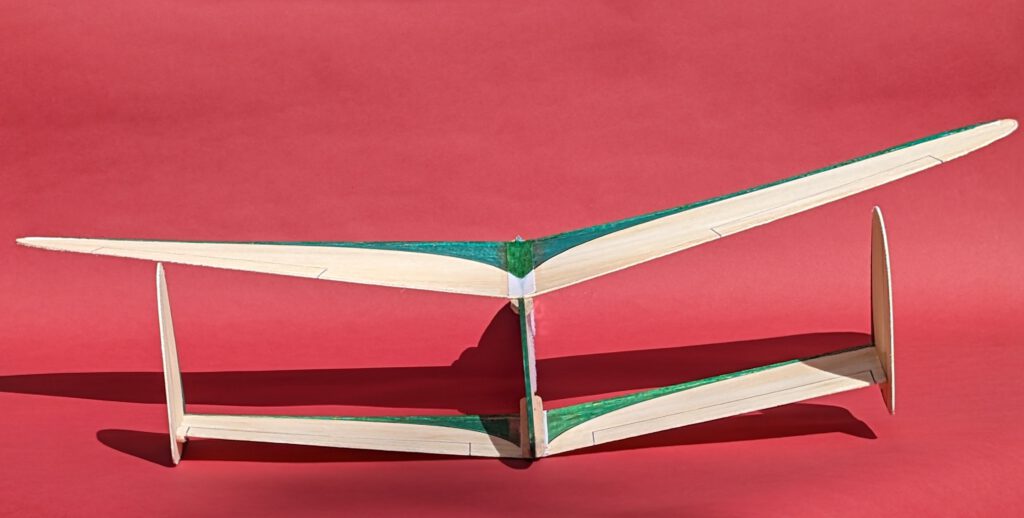
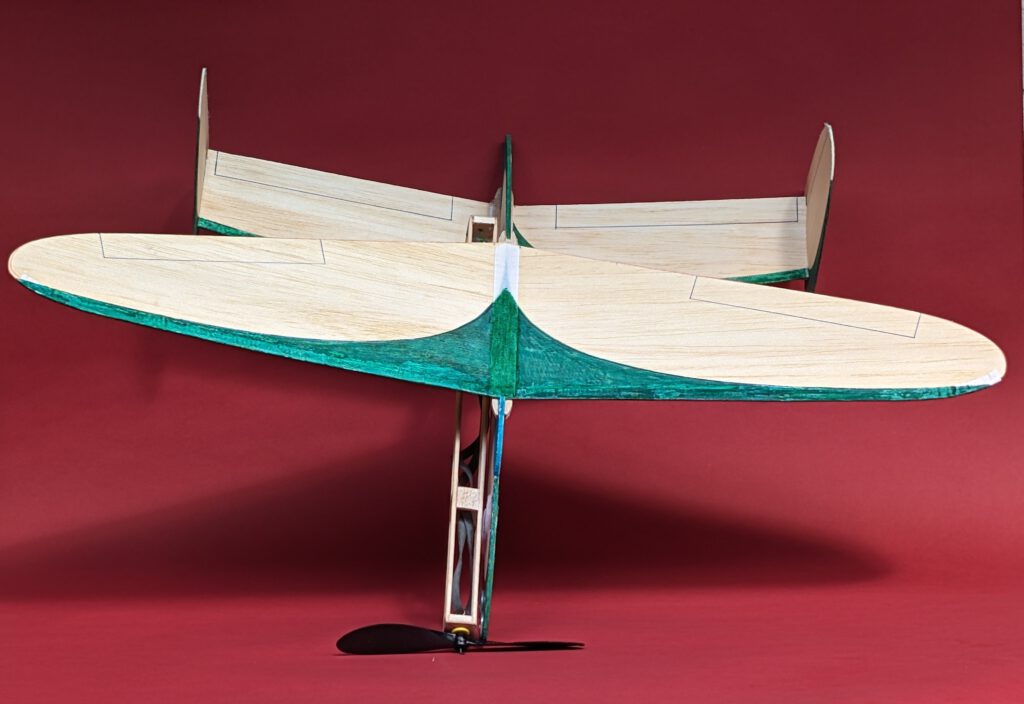
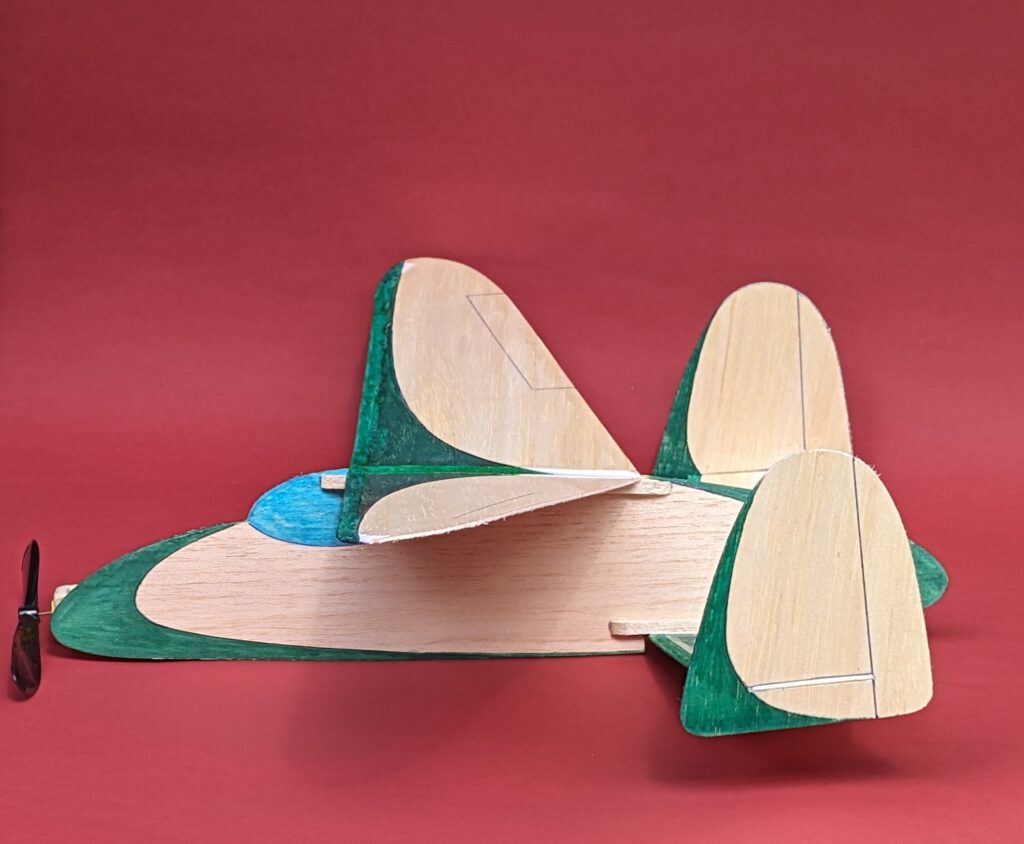
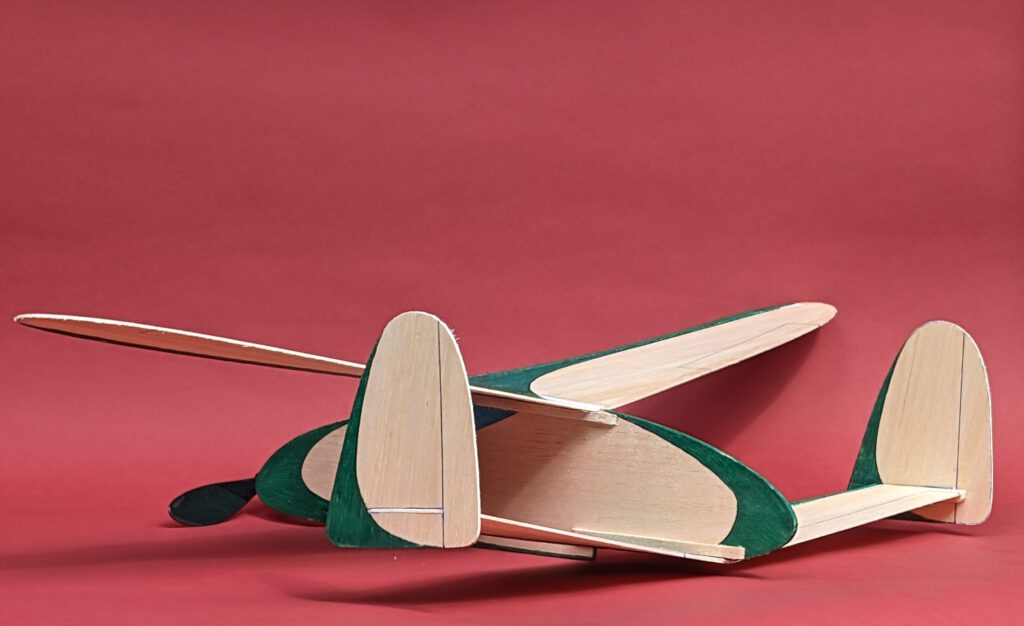
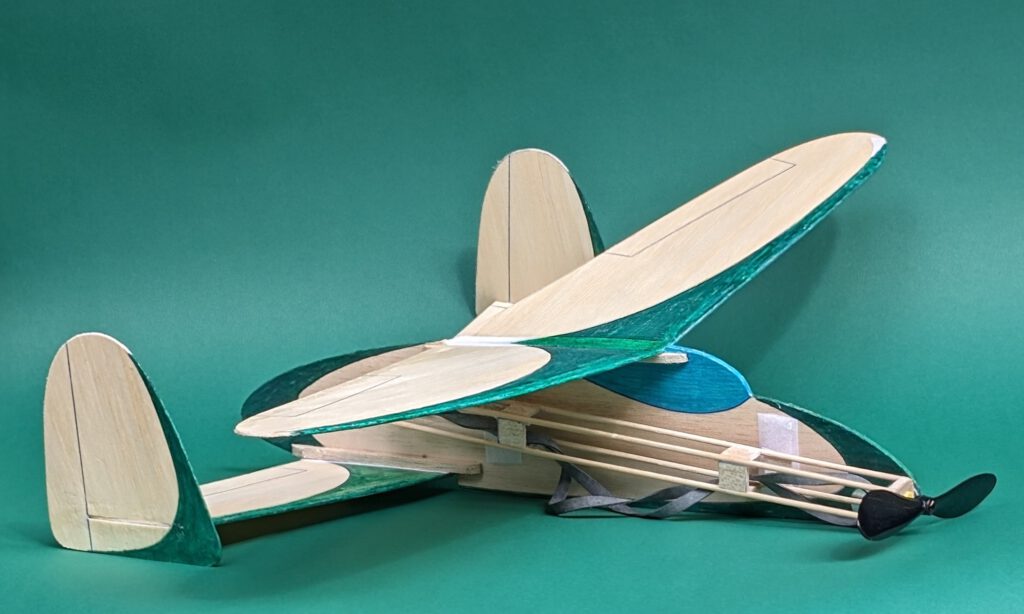
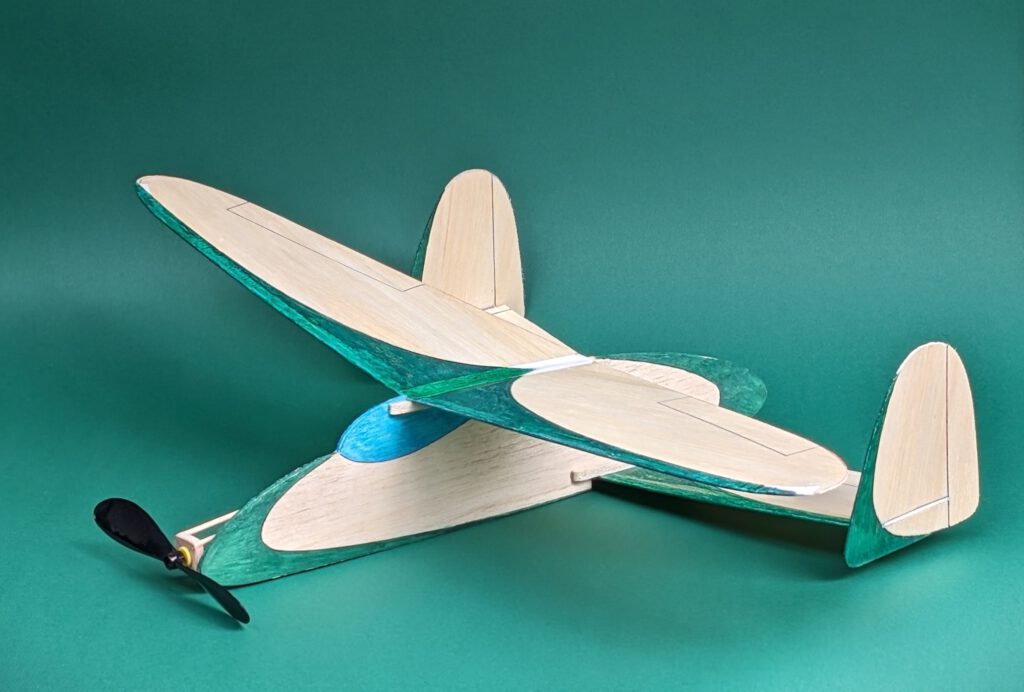
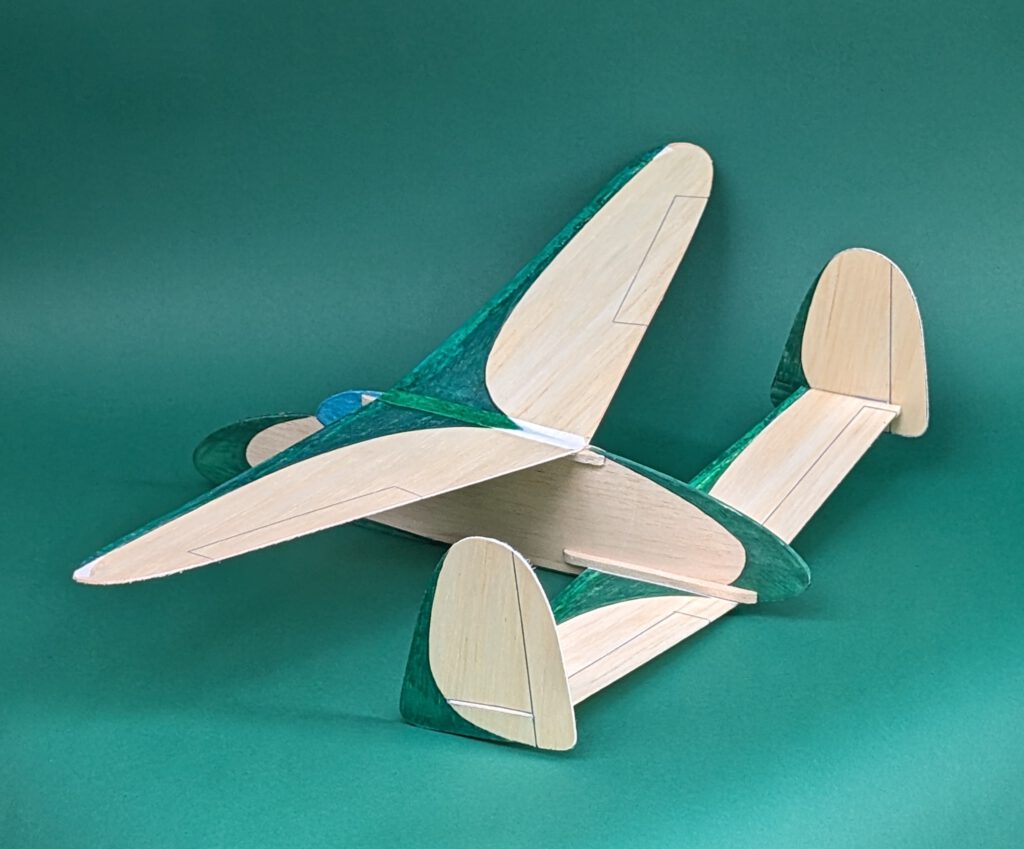
Building the sheet balsa chuck glider Duo Mono mod.
Materials:
Fuselage: B 2.5; both wings: B 1.5; wing supports for front and rear wing: B strips 5 x 5; fins: B 1; fin supports: B strips 4 x 4; template for fins: B 2.5; linen/cotton band width ½ in; ballast: piece of steel or lead.
Assembly:
Cut out balsa parts according to plan (photo). Sand meticulously. Transfer outlines of canopy, rudders, ailerons ec. with pen from plan to wood (photo). Make colouring now, if wished (photo).
Fuselage.
Make cutouts for both wings. Cement wing supports in their positions. Use clamps, clothespins or needles (photo).
Wings.
Cement front wing halves one to the other according to plan thereby paying attention to given dihedral. Visual check to obtain best possible symmetry. Repeat procedures for rear wing. Use linen/cotton band for reinforcing wing half joints on top and bottom and leading edges of both wings .
Fins.
Cement fin support strips on rear wing tip undersides leaving only one mm as seat for fins. Let dry. Make a template (B 2.5) to assure that fins stand at the same angle on rear wings. Remember model only looks professional when absolute symmetry of all parts is maintained. Cement fins to rear wing and let dry.
Final assembly.
Put fuselage on a so called „third hand“. Glue wings into their given positions. Double check here as well symmetry.
Balance at given CG.
Have fun with your Duo Mono mod. which is a very stable glider. For altering direction of flight warp left or right rear wing up or down a little.
Note: This model has been as well successfully flown with a rubber power unit (RPU 30) as can be seen on some of the photos.
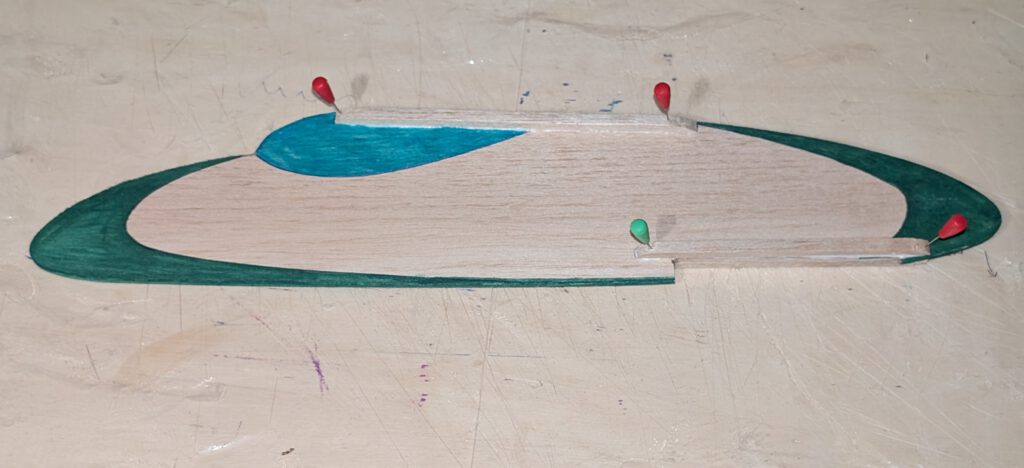
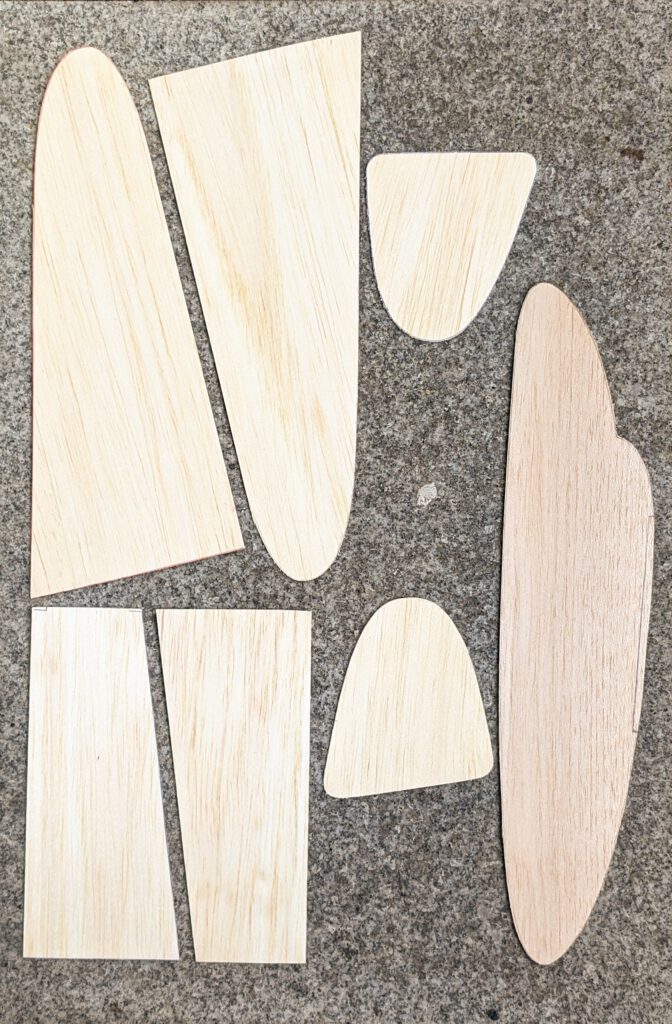
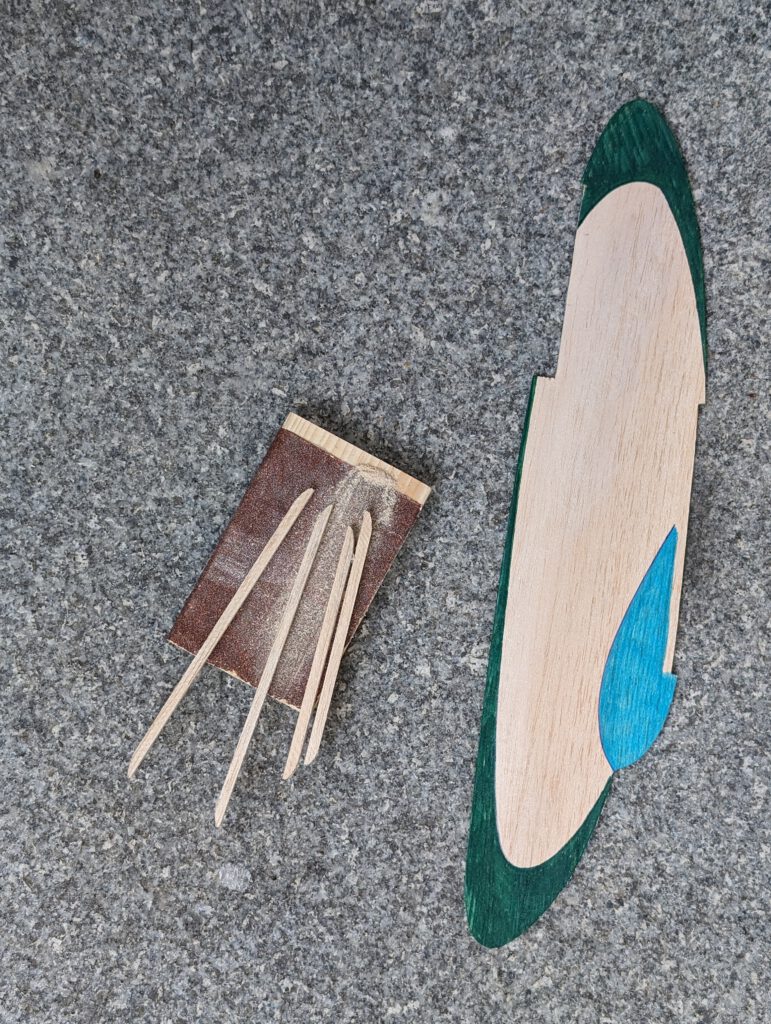
Un bon vol a tous mes amis! (een goede vlucht voor al mijn vrienden!)
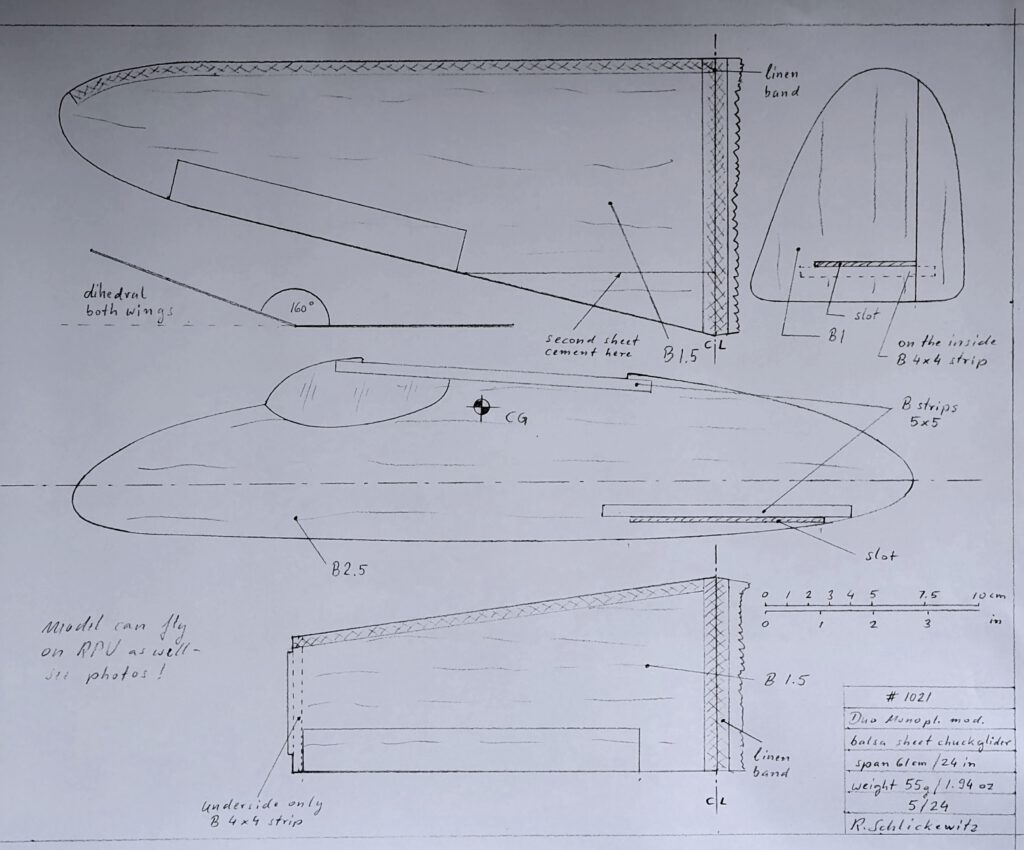
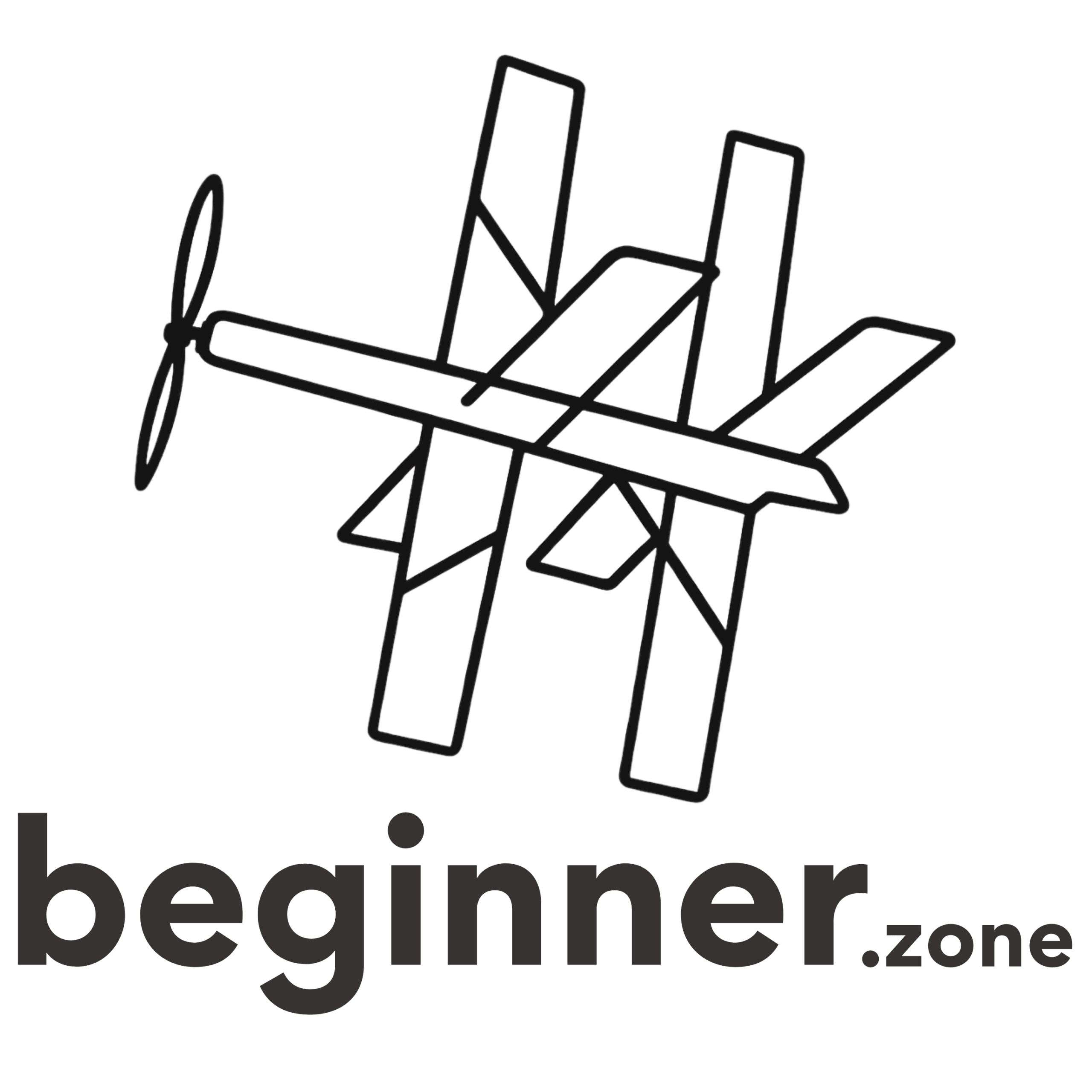
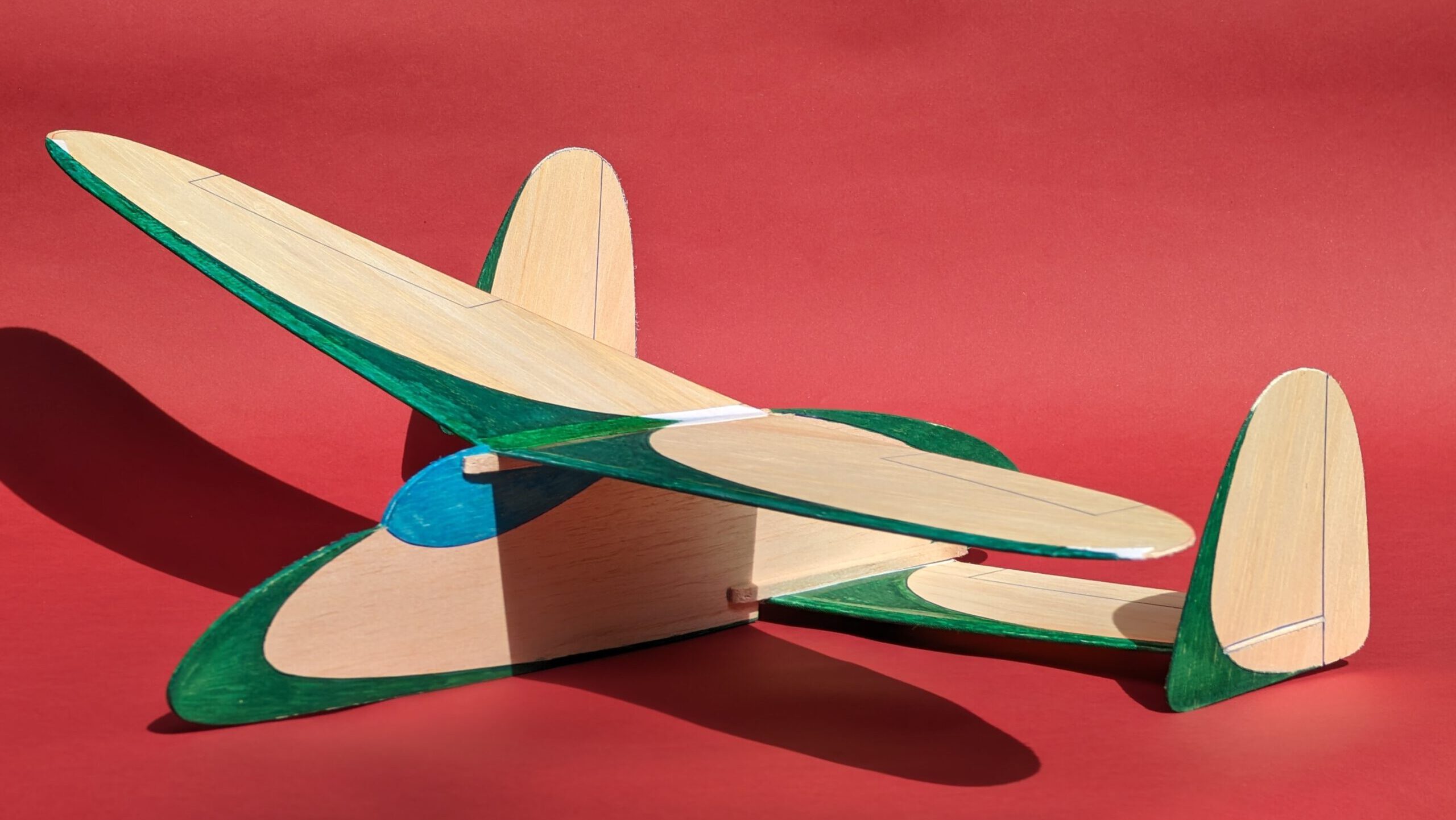
Leave a Reply